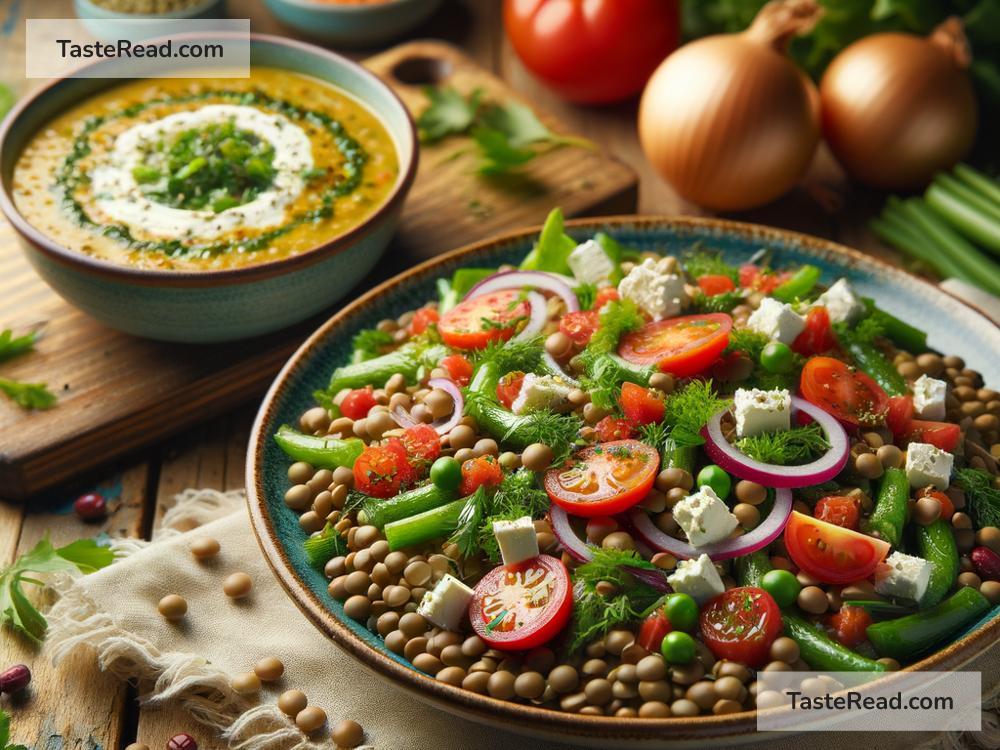Exploring the Use of Lentils in Mediterranean Cooking
Mediterranean cuisine, known for its vibrant flavors, fresh ingredients, and diverse dishes, has long captured the palates of food enthusiasts around the world. One humble ingredient that plays an essential role in this culinary tradition, yet often flies under the radar, is the lentil. These small, lens-shaped legumes are not only packed with nutrients but also hold a special place in Mediterranean cooking, offering versatility that can suit any meal. Let’s dive into the world of lentils in Mediterranean cuisine and discover how they can elevate your dishes.
A Brief Lentil Introduction
Lentils come in various colors, including brown, green, red, and black, each with its unique texture and flavor profile, making them an incredibly flexible ingredient. They’re a powerhouse of nutrition, rich in proteins, fiber, and minerals like iron and folate, making them a great meat alternative for vegetarian and vegan diets.
Lentils in Mediterranean Diet
The Mediterranean diet, famous for promoting heart health and longevity, emphasizes plant-based foods, whole grains, nuts, and of course, legumes like lentils. It’s a diet that mirrors the eating habits of people living along the Mediterranean Sea, where lentils have been a staple for thousands of years. They’re used in a variety of ways, from soups and salads to stews and side dishes.
The Versatility of Lentils
One of the great things about lentils is their ability to absorb flavors from spices and herbs, making them a fantastic canvas for Mediterranean dishes. They don’t require soaking like other legumes, making them a convenient choice for quick and easy meals. Here are some ways lentils are used in Mediterranean cooking:
-
Soups and Stews: Lentils are a primary ingredient in many hearty and comforting soups and stews. A classic example is the Greek lentil soup ‘Fakes,’ which is a simple, yet flavor-packed dish made with olive oil, garlic, onion, and bay leaves.
-
Salads: Cold lentil salads, tossed with fresh vegetables, herbs, and a zesty dressing, are a refreshing and nutritious option for a light lunch or side dish. They’re especially popular in the summer months.
-
Rice Dishes: In many Mediterranean countries, lentils are cooked with rice or bulgur wheat, creating a complete protein dish that’s both satisfying and healthy. ‘Mujaddara,’ a Middle Eastern dish made with lentils, rice, and caramelized onions, is a fantastic example of this.
-
Dips and Spreads: Lentils can be blended into smooth, flavorful dips and spreads. A lentil-based hummus can be a unique and delicious twist on the traditional chickpea version, perfect for serving with warm pita bread or fresh vegetables.
Tips for Cooking with Lentils
-
Pick the Right Type: Different dishes call for different types of lentils. For salads or dishes where you want the lentils to hold their shape, opt for green or black lentils. For soups and stews, red or brown lentils, which tend to get mushy, are ideal.
-
Rinse and Sort: Always rinse lentils under cold water before cooking and sort through them to remove any debris or small stones.
-
Cooking Time: Keep in mind that cooking times can vary depending on the type of lentil. Generally, they take anywhere from 15 to 45 minutes to cook. Be careful not to overcook them unless the recipe specifically calls for it.
-
Season Wisely: Lentils themselves have a mild, earthy flavor, so they benefit greatly from being cooked with flavorful broths, herbs, and spices. However, avoid adding salt or acidic ingredients until the lentils are fully cooked, as these can make the outer skin tough.
Conclusion
Lentils are undoubtedly a cornerstone of Mediterranean cooking, embodying the diet’s emphasis on healthy, whole foods. With their remarkable versatility, nutritional benefits, and delicious taste, they’re an ingredient worth exploring in your cooking adventures. Whether you’re making a robust lentil stew, a refreshing salad, or a smooth dip, lentils lend themselves beautifully to a myriad of dishes, bringing a taste of the Mediterranean right onto your plate. So the next time you’re pondering what to cook, consider the humble lentil – it might just be the star ingredient you’re looking for.


